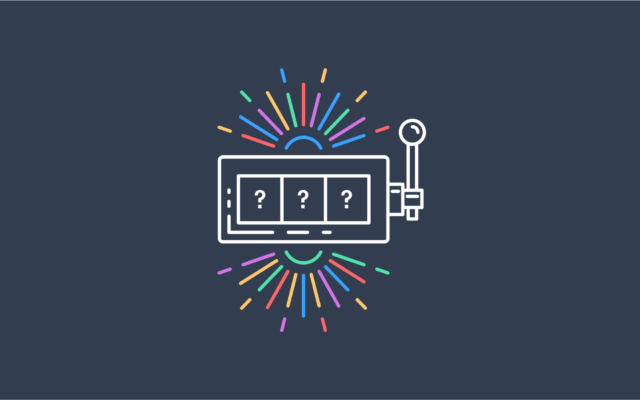So, you’ve investigated IoT and come up with some ideas of where it could help your business. Hopefully, you’ve done a high-level business case which indicates this should be worth pursuing. All good steps but at some point, you will need to get into the enabling technology.
Perhaps you want to run a proof of value exercise, look at a larger scale pilot or if you’re feeling brave enough to initiate a large-scale investment. Here within lies one of the major challenges. Search for IoT and you will uncover a wealth of different vendors making all kinds of claims for their technology. Where do you start? Who should you talk to? You can’t talk to them all.
Selecting your IoT technology – no one does it all
So, assuming you are looking to get a competitive edge in your market and want to move now, what should you look for when selecting your IoT technology?
First you need to be aware you are unlikely to get it all from one vendor. The companies that manufacture sensors are unlikely to be the same that provide wireless networking services or that are highly experienced in enterprise-class cloud software applications.
One thing we have learned in the last 20 years is to avoid building large proprietary business solutions. These end up with a very high cost of ownership, leave the customer beholden to the vendor and do not provide agility expected by the business. The current trend is to look for open, extensible, platforms. These aim to provide core functionality but (in theory) are easily integrated with other technologies to reduce implementation time, cost and risk. In IoT this aspect is very important, given the range of technologies required to create a usable solution, it is not just a “software” play.
The market has at least matured enough that there are several highly capable platforms on which you can develop your specific business solution(s). None of them is perfect but this approach will allow you to manage and grow your solution as the vendor develops new capabilities and resolves deficiencies.
All the recommendations below are based on a number of “principles”, those necessary for any modern business when selecting IT:
- Secure. Protect reputation, IP and mitigate financial loss.
- Flexible/agile. Ease of adapting to the business need.
- Open. Ease of integration and lower TCO.
What to look for?
Below are listed some of the important IoT platform features you need to look for:
A flexible, distributed architecture. One of the key benefits of IoT is the ability to provide compute capabilities at the most effective point in the process. This may be on the device itself (perhaps to reduce network traffic, provide real-time control or allow limited “offline operation” when network availability isn’t guaranteed), it may be on a local compute “network” device filtering data from numerous devices, it may be on a cloud-based service providing advanced analytics and actioning historical insight or centralised device management or different compute may occur at each of these stages.
For example:
- A device performs basic “delta” processing so that only “changed” real-world data is sent (e.g. how many pairs of socks are there in the sock area of a retail store. Has it changed since the scan was last run? If so then send the new value (presuming some have been bought), if not then don’t send anything)
- A network “edge” device takes inputs from 100 devices across the retail floor and performs some “event” analytics so only meaningful data is sent to the cloud hub (e.g. which items are getting close to running out of stock or which items have been left in the changing room)
- The cloud hub analyses and actions the insight (e.g. check the stock room, check the changing area, initiate an employee task to restock the shelf, if item sold then initiate a request to order more stock from central procurement)
As compute capability, storage, power management and networking capabilities improve you need to be able to easily move compute loads within the architecture, without being locked to the original model. This will allow the solution to scale easily for other workloads, provide agility to the business (for the inevitable change requests) and reduce the cost of ownership.
The interface for managing the architecture needs to be visual for ease of operator understanding and control but should have suitable governance controls so that changes are properly considered before deployment and can be propagated in a controlled manner (e.g. per room, floor, factory, office, region, country etc).
Open standards. You don’t want to be constrained by proprietary standards. This will (at some point) limit the real-world data you can capture, increase the cost of ownership and limit the business agility of the solution. Just look at customers who were “locked” into large-scale ERP implementations in the 90’s and 00’s, who are still paying a fortune in support and maintenance and yet cannot easily move to lower cost, more agile alternatives.
Note that “open” doesn’t necessarily mean “open source” but do ensure that any platform exposes its functionality via easy to use API’s and ideally is hosted with a PaaS (Platform as a Service) model so you can just use the bits you need.
In most scenarios, you will want to integrate the data and insight from your IoT solution into action. The “vehicle” for this action could be an existing ERP or CRM platform or a field service solution tasked with ensuring the right engineer turns up at the right time, with the right skills, tools and parts to get the job done on the first visit.
System integration used to be the “never-ending rope” in terms of time and cost but advances in cloud-based API management have made this task easier than it used to be.
Device management. There is a large difference between doing a lab PoC with 10 devices and implementing a global solution which could have 100’s of thousands of devices or more. Consider:
- How easy it is it to provision a new device? Ideally, it should auto provision but see point 4 below on security. You don’t just want “any old” device auto provisioning onto your network.
- How can you tell if a device is still working properly?
- How can you upgrade the device firmware to fix bugs, improve security or provide new functionality? You probably don’t want to roll out an update to 10,000 devices in one go.
- To this end how can you get a “single pane” view of your device estate to ease monitoring and control? You should be able to segment your IoT estate into logical units (e.g. country, building, floor, office, factory, zone etc.). This will allow you to view/update a specific office, floor or even room to reduce risk and aid troubleshooting.
- Do you have any “self-healing” and resilience capabilities within your solution to fix or bypass faulty devices whilst maintaining the required service?
- Security model. Much has been written about the need for effective security within an IoT solution and the threat is well founded. It is one thing to have customer credit card data stolen and people defrauded. It is a whole different world to have a power station hacked and shutdown or overloaded.
With this in mind, the importance of security will only grow as IoT solutions start to take on critical workloads. It is something that must be the solution design from the start and not added as an “afterthought” once the rest has been built. An overarching model needs to be developed covering every component in the chain.
Advanced analytics. Collecting real-world data and managing those devices is a good start but unless you can build real-world data models and derive actionable insight you will show little value to your business stakeholders.
Advanced analytics includes:
- Stream analytics. Analysing data in real time so insight can be actioned in real time. Typically, operational technologies (OT) have this capability, but it is usually embedded in the machine and not easily adapted to changing business need.
- Historical Big Data analytics. Taking data from multiple sources, including your IoT data, to better model the real-world and understand cause and effect. Why does something happen? When might something happen again?
- Cognitive Intelligence such as machine learning or deep learning which can be used to find insights that even the best data scientist would struggle with, given data volume and relational complexity.
These approaches can allow your business to respond quickly (and in many cases automatically) to real-world events and/or allow you to predict when an important or critical event is likely to occur (for example, machine failure) so its effect can be mitigated (for example, perform preventative maintenance outside core operating hours).
Note that it is perfectly feasible to source your analytical toolset from a different vendor than that providing your device management and data collection capability but there are some advantages of maintaining analytics within the same vendor product set.
An existing partner ecosystem. I have already indicated that most IoT solutions will involve multiple vendors. Having a pre-built ecosystem will make it easier, quicker and cheaper to deploy your solution as integration will have been pre-tested and (ideally) certified on your chosen platform, helping to reduce “buck passing” when the inevitable issues occur.
Look for user groups where you can meet other customers who have already made deployments and where you can learn “best practice”. Finally, think about what kind of field service is available for the installation or repair of devices that are not working. Again, when deploying devices at large scale this will be important to ensure continuity and quality of service.
Getting It Done
A final point to consider is whether you build a team in-house to design, implement and deploy, or whether you get some external help.
At one extreme you can engage a top-4 consultancy or global System Integrator. Many will struggle to provide you with value for money or quick results, they have too much internal bureaucracy and process and one could argue are more interested in billing “bodies” for as long as possible. Also, check what they have actually done for customers and you’re not fooled by fancy marketing.
Building your own team keeps control in-house but skilled and experienced people are expensive, not that easy to find and time is ticking.
An alternative would be to blend options, augmented by a boutique consultancy with members that have “been there and done that” to advise throughout the process, including platform selection. As with anything new, getting started in the right direction is critical.
Typically, these have very experienced practitioners, are substantially cheaper than high-end consultancies and will get things done with your agenda and outcomes top of mind.
Article by channel:
Everything you need to know about Digital Transformation
The best articles, news and events direct to your inbox
Read more articles tagged: Featured, Internet of Things







